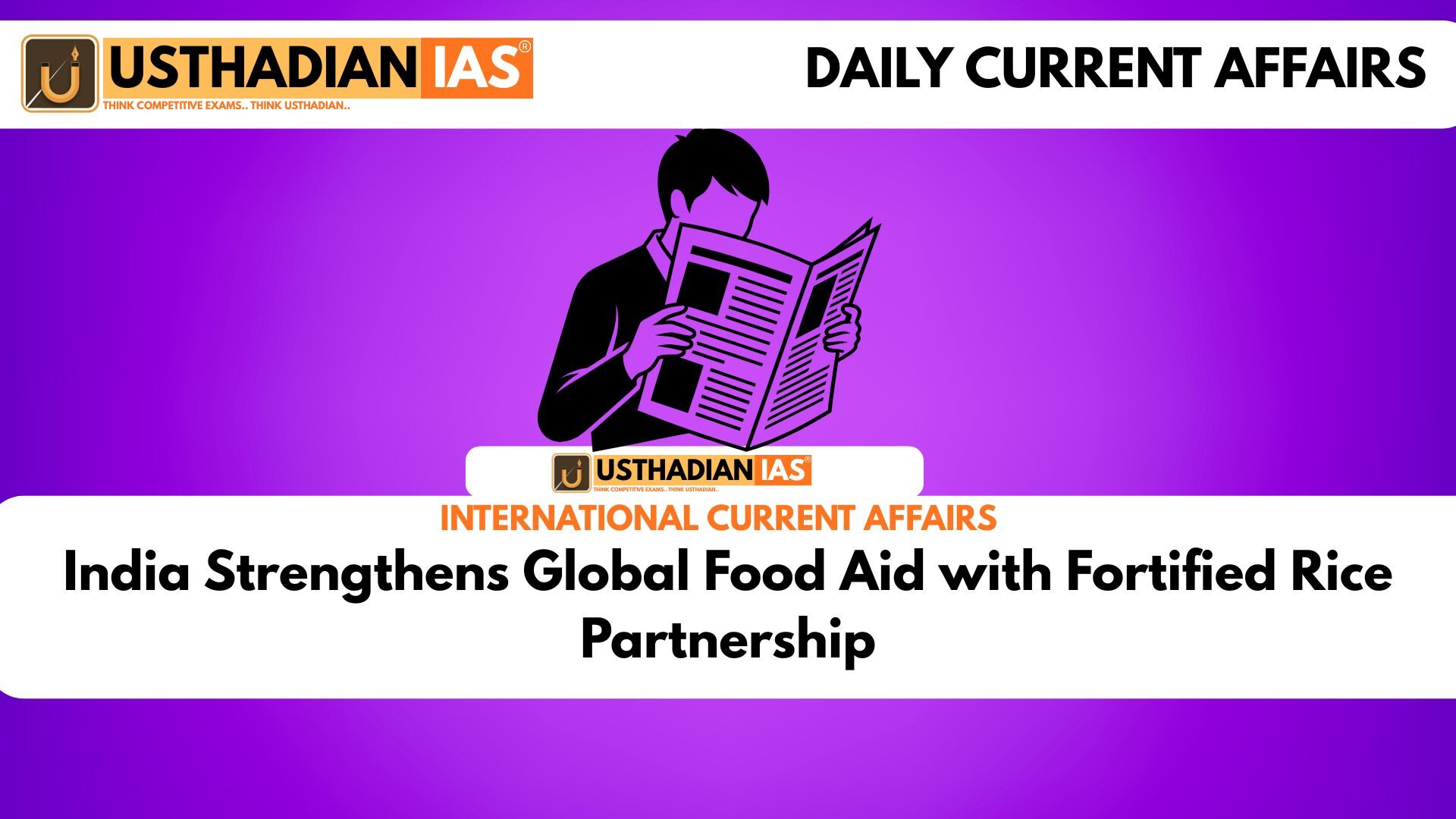India’s role in global food security
India Strengthens Global Food Aid with Fortified Rice Partnership: India has emerged as a critical player in addressing the challenge of global hunger. On 25 August 2025, the Government of India and the World Food Programme (WFP) signed a Letter of Intent (LoI) to supply fortified rice for humanitarian operations. This partnership underscores India’s position as both a surplus food producer and a responsible contributor to global welfare.
Static GK fact: The World Food Programme (WFP) was awarded the Nobel Peace Prize in 2020 for its efforts to combat hunger and improve conditions for peace in conflict-affected areas.
Fortified rice as nutrition security
Fortified rice, enriched with iron, folic acid, and vitamin B12, plays a pivotal role in tackling hidden hunger caused by micronutrient deficiencies. Through the Department of Food and Public Distribution (DFPD), India will enable WFP to source fortified rice directly from its reserves.
This move reflects India’s guiding philosophy of Vasudhaiva Kutumbakam (the world is one family) and provides a sustainable model to support food-insecure populations globally.
Static GK Tip: The Food Fortification Resource Centre (FFRC) in India functions under FSSAI to promote large-scale fortification initiatives.
Partnership strengthened through global cooperation
During the LoI signing, Sanjeev Chopra, Secretary of DFPD, emphasized India’s global responsibility in fighting hunger. Carl Skau, Deputy Executive Director of WFP, commended India for its consistent role in ensuring food security and peace.
The agreement builds on discussions at the WFP Executive Board meeting in Rome (February 2025), marking a formal step toward long-term collaboration.
Expanding collaboration beyond rice supply
The India-WFP cooperation extends beyond the rice agreement. Key projects include:
- Supply Chain Optimization to improve procurement and delivery efficiency.
- Annapurti Devices (Grain ATMs) for contactless, technology-driven distribution.
- Jan Poshan Kendras for local nutrition awareness.
- Smart Warehousing for digital monitoring of grain storage.
- Flospans (Mobile Storage Units) for remote humanitarian zones.
- Nationwide fortified rice rollout through India’s public distribution system.
These innovations not only strengthen India’s domestic welfare schemes but also create scalable models adaptable for global use.
Static GK fact: India’s Public Distribution System (PDS) is the world’s largest food security program, serving more than 800 million beneficiaries under the National Food Security Act, 2013.
Why this partnership is crucial
Global hunger is worsening due to conflict, climate change, and economic instability. Funding shortfalls have strained humanitarian agencies. The India-WFP initiative ensures a stable, nutrient-rich food supply for vulnerable populations, reinforcing the Zero Hunger goal (SDG 2).
By contributing as a provider of global public goods, India demonstrates leadership in sustainable development and humanitarian responsibility. This initiative also highlights India’s transition from an aid recipient nation to a global partner in shaping food security policies.
Static Usthadian Current Affairs Table
India Strengthens Global Food Aid with Fortified Rice Partnership:
| Topic | Detail |
| Date of LoI signing | 25 August 2025 |
| Partners | Government of India & World Food Programme |
| Main commodity | Fortified rice (iron, folic acid, vitamin B12) |
| Indian department involved | Department of Food and Public Distribution (DFPD) |
| WFP leader present | Carl Skau, Deputy Executive Director |
| Indian representative | Sanjeev Chopra, Secretary, DFPD |
| Origin of discussions | WFP Executive Board meeting, Rome, February 2025 |
| Key initiatives | Annapurti Devices, Jan Poshan Kendra, Smart Warehousing, Flospans |
| Global goal supported | Zero Hunger (SDG 2) |
| Static GK fact | WFP won the 2020 Nobel Peace Prize |








